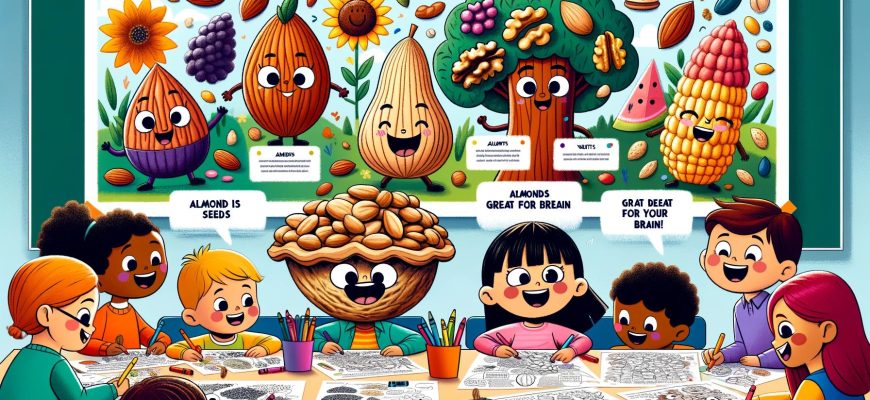Introducing children to the basics of nutrition through interactive and engaging methods can foster lifelong healthy eating habits. “Teaching About Nuts, Seeds, and Healthy Nutrients Through Coloring Activities” explores how these simple artistic tasks assist in developing motor skills and enhance children’s understanding of healthy food options.
This article discusses the educational benefits of using coloring pages to introduce young learners to nuts and seeds and their importance in our diet.
Why Focus on Nuts and Seeds?
Nuts and seeds are excellent sources of vitamins, minerals, antioxidants, and healthy fats, yet their small size and varied textures can make them less appealing to young children. Coloring activities that feature these nutritious items can demystify them for young eaters, showcasing their variety and the fun aspects of including them in daily meals.
Coloring as an Educational Tool
Coloring is a fundamental activity that supports early development in several ways:
– Cognitive Development: Focusing on coloring within lines improves hand-eye coordination, attention to detail, and patience.
– Knowledge Enhancement: Associating specific colors with different types of seeds and nuts helps children remember what they have learned about these foods.
– Language Skills: Discussing coloring pages during and after the activity provides opportunities to introduce new vocabulary related to healthy eating and cooking.
How Coloring Can Introduce Nuts and Seeds
1. Visual Learning:
– Create coloring pages that feature a variety of nuts and seeds, such as almonds, walnuts, sunflower seeds, and flaxseeds.
– Use these pages to highlight each type’s unique shape, size, and color, which can help children identify them in real life.
2. Health Benefits:
– Accompany each coloring page with simple facts about the health benefits of the nut or seed featured. For example, “Almonds are good for your brain!”
– This information can be presented as fun and engaging through short, rhyming sentences or a catchy slogan.
3. Incorporating Recipes:
– Introduce coloring activities that connect these ingredients to recipes for older children. For instance, a coloring page could depict a scene of making almond butter or a trail mix with various seeds and nuts.
– These activities can spark discussions about different ways to enjoy these healthy options, encouraging children to try them at home.
Complex Coloring Tasks for Older Children
For children who have mastered basic coloring skills, more complex tasks can provide additional benefits:
Recipe Creation: Older children can design their recipes using the nuts and seeds they’ve learned about. Coloring pages could include template recipes where kids can ‘fill in’ the ingredients with colors and textures.
Meal Planning: Use coloring pages to teach about meal balance. Pages might feature ‘plates’ where children can color in portions of nuts, seeds, fruits, vegetables, and proteins.
Coloring activities offer a unique educational opportunity to introduce young children to the importance of nuts, seeds, and overall nutrition. These activities make learning about these foods fun and integrate essential skills such as reading, creativity, and cognitive development.
By using coloring to teach about healthy eating, parents and educators can provide children with a solid foundation for making informed food choices while enjoying their learning journey.Source: ESLE








